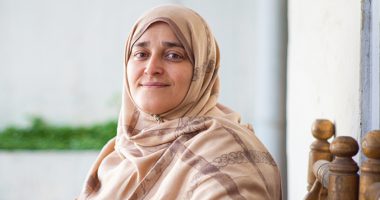WASHINGTON, DC — Azerbaijani diplomacy and propaganda continues to mislead the international community and Azerbaijani people by falsifying the essence and the history of the Nagorno-Karabakh conflict and the facts about the Khojaly events in particular.
By distorting the Khojaly events, Azerbaijani regime attempts to escape the responsibility for the Armenian massacres in Sumgait (February, 1988), Kirovabad (November, 1988), Baku (January, 1990), Maragha (April 1992) and against its own population in Khojaly. Azerbaijan strives to portray itself as a victim, thus trying to prepare a moral ground both domestically and internationally to unleash another war against Nagorno-Karabakh.
Azerbaijan continues to reject international appeals, including by the European Court of Human Rights, to openly debate about the events in Khojaly. In that regard one can only ask why all who have expressed points of views differing from Azerbaijani official version of the events have been either killed, like journalist Mustafaev, or imprisoned like journalist Fatullayev, or politically persecuted like Ayaz Mutalibov, the first president of Azerbaijan?
In reality Khojaly village was one of the Azerbaijani strongholds in the heart of Nagorno-Karabakh which for many months as Human Rights Watch put it “pounded the capital of Nagorno Karabakh, Stepanakert, and other Armenian towns and villages with shells and grenades. The indiscriminate shelling and sniper shooting killed or maimed hundreds of civilians, destroyed homes, hospitals and other objects that are not legitimate military targets, and generally terrorized the civilian population”.[1] Therefore, suppressing the Azerbaijani fire had become a matter of survival for the people of Nagorno-Karabakh.
As Azerbaijani journalist Eynulla Fatullayev stated “And even several days prior to the attack, the Armenians had been continuously warning the population about the planned operation through loudspeakers and suggesting that the civilians abandon the town and escape from the encirclement through a humanitarian corridor. According to the Khojaly refugees’ own words, they had used this corridor and, indeed, the Armenian soldiers positioned behind the corridor had not opened fire on them”[2].
However, goes on Fatullayev “… part of the Khojaly inhabitants had been fired upon by our own [Azerbaijani troops]… Whether it was done intentionally or not is to be determined by investigators … [They were killed] not by [some] mysterious [shooters], but by provocateurs from the NFA[3] battalions … [The corpses] had been mutilated by our own …”[4].
Ayaz Mutalibov, then the president of Azerbaijan blamed his political opponents for killings in Khojaly. He stated in an interview that “…the corridor, by which people could escape, had nonetheless been left by the Armenians. So, why did they have to open fire? Especially in the area around Aghdam, where there was sufficient force at that time to get help to the people. As the Khojali inhabitants, who narrowly escaped, say, it was all organized in order to have grounds for my resignation. Some forces functioned for the effort to discredit the president”[5].
The fact that Khojaly inhabitants felt victim of fierce domestic political strife for power in Azerbaijan was confirmed also by then Chairman of Azerbaijan’s Supreme Council Karayev and his successor Mamedov, Azerbaijani Human Rights Activist Yunusov and others.
Heydar Aliyev, then a presidential hopeful in Azerbaijan stated that “…the bloodshed will profit us. We should not interfere in the course of events”[6].
Mr. Fatullayev, the Chief Editor of the Azerbaijani newspaper “Realny Azerbaijan” spent many years in prison for alleged defamation of inhabitants of Khojaly. He appealed to the European court of Human Rights, which ruled that the Azerbaijani government shall immediately release Fatullayev. He was eventually released in 2011 and shortly after confirmed to Radio Liberty that he has not changed his views on Khojaly events and held “Azerbaijani fighters, not Armenians, responsible for the 1992 killings” of Khojaly inhabitants[7].
The Azerbaijani aggressive rhetoric and distortion of history, backed by the billions worth acquisition of offensive weaponry[8], bares serious threat to the security and stability for the whole region and thus should be adequately countered by the international community.
Embassy of the Republic of Armenia to the United States of America
[1] http://www.hrw.org/reports/1993/WR93/Hsw-07.htm#TopOfPage [2] http://hudoc.echr.coe.int/sites/eng/pages/search.aspx#{“fulltext”:[“fatullayev”],”itemid”:[“001-98401”]} [3] National Front of Azerbaijan. In 1992 an opposition militarized party, which came to power after the Khojaly events. [4] ‘Case of Fatullayev v Azerbaijan’ (Application no. 40984/07) European Court of Human Rightshttp://hudoc.echr.coe.int/sites/eng/pages/search.aspx#{“fulltext”:[“fatullayev”],”itemid”:[“001-98401”]}
[5] ‘Nezavisimaya Gazetta’, 2 April 1992 (Russia) [6] ‘Bilik-Dunyasi Agency’, April 1992 (Azerbaijan) [7] http://www.rferl.org/content/fatullayev_says_im_still_here/24347732.html [8] Azerbaijan made the largest real percentage increase (89 per cent) in military spending in the world. “Background paper on SIPRI military expenditure data, 2011″http://www.sipri.org/research/armaments/milex










1 comment
These facts need to be sent to wikipedia and to amnesty international as well.